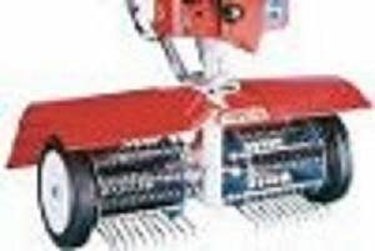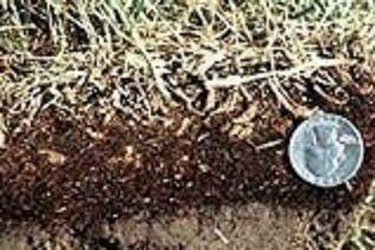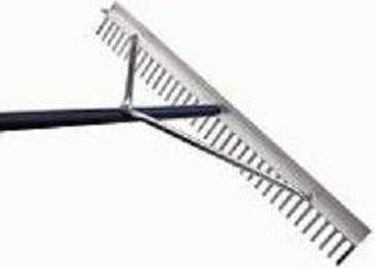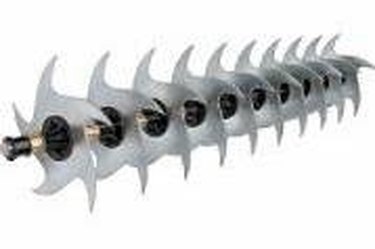
The Problem

Thatch is composed of grass clippings, twigs and other organic matter that falls on the ground. A little thatch is good for a lawn--it shades the ground, keeps roots cool and conserves moisture. Most lawns develop a layer of thatch naturally, especially those planted in warm-weather grasses such as Bermuda, St. Augustine and zoysia; and cool-weather grasses such as bent grass and Kentucky bluegrass. A little thatch helps fertilize the lawn as it decomposes, but a thick layer forms a hard shell over the ground. When thatch gets more than 1/2 inch thick, it can strangle a lawn by locking out air, light and moisture, just like a thatched roof on a medieval cottage. Most lawns maintain a healthy layer of thatch with only a seasonal raking or a clippings catcher on a mower, but acidic soils tend to encourage the growth of the thatch layer, particularly if a thatch-producing grass is planted. Before removing a layer of thatch, check the acidity of the soil and make plans to adjust it after thatching, if necessary. If grass roots have grown into the thatch layer, gradual thatchings must coax the roots back down into the dirt.
Manual Thatchers
Video of the Day

Thatchers come in several forms, from rake-like tools to pull out and loosen the layer, to gas and electric-powered machines that rake or cut the thatch. All of these machines basically score and lift, reducing the layer of thatch to a healthy thickness. The simplest of these are rakes with short, sharp-edged, rigid tines. They may look like a regular yard rake, or they may have a head of sharp, semi-circular blades. Both are pulled through the lawn; they catch the thatch with their sharp teeth and pull it loose. Care must be taken to avoid tearing into the grass roots in the soil, making the rake with the semicircular tines a better tool because it can be pulled at an angle that pulls the thatch from the top rather than from the ground up. After the thatch is pulled loose, it must be gathered with a regular lawn rake and removed from the lawn.
Video of the Day
Mechanical Thatchers

Mechanical thatchers come in models that resemble lawn mowers or in large models made to pull behind lawn tractors. They have long, comb-like prongs or blades that revolve around an axle. Most have a height adjustment that allows the operator to set the machine to cut only the top of the thatch, leaving 1/4 inch or so to protect the grass crowns. Some bladed thatchers can be set at 90 degrees or slanted at a 45-degree angle to cut into the thatch from different directions, making it easier to tear it loose. Whatever type of machine is used, thatching is best done when the grass is slowing its rate of growth rather than just starting to grow (this varies in different growing zones). After de-thatching, the loosened leavings must be removed. In order to minimize shock, the lawn should be fertilized and watered thoroughly.